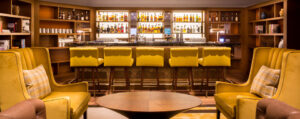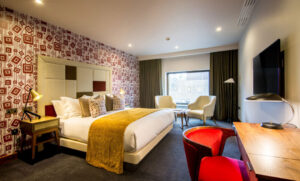Hotels are more than just places to rest; they are immersive experiences that start from the moment a guest steps through the front doors. The design of hotel public spaces plays a crucial role in shaping the overall guest experience. These communal areas are not only functional but also serve as the first impression, setting the tone for a memorable stay. In this article, we will explore the art and significance of designing inviting hotel public spaces.
The Lobby: A Grand Entrance
The lobby is the heartbeat of any hotel, acting as a welcoming space where guests gather, check-in, and embark on their journey. The design of the lobby must strike a balance between functionality and aesthetics. The choice of furniture, lighting, and decor should create an ambiance that resonates with the hotel’s brand and caters to the diverse needs of guests.
Natural light and open spaces are increasingly favored, creating an airy and inviting atmosphere. Comfortable seating arrangements, strategically placed artwork, and live greenery contribute to a warm and welcoming environment. The front desk is no longer just a transactional space; it’s an opportunity to make a lasting impression.
The Lounge: Socializing in Style
Hotel lounges are evolving into dynamic spaces that cater to both business and leisure travelers. Comfortable seating, high-speed Wi-Fi, and power outlets are essential for the modern traveler who often uses these spaces as remote offices. To create an inviting atmosphere, designers incorporate a mix of textures, colors, and lighting that exude warmth and sophistication.
The lounge is not just for work; it’s a place for socializing. Some hotels have embraced the concept of the “third space,” offering a setting that blurs the lines between public and private, encouraging guests to connect and unwind. This shift in design philosophy transforms hotel lounges into vibrant hubs of activity, therefore, fostering a sense of community among guests.
Restaurants and Bars: Culinary Experiences
Hotel restaurants and bars are no longer mere conveniences; they are destinations in themselves. The design of these spaces should reflect the hotel’s overall theme while creating an atmosphere that complements the culinary experience. Open kitchens, chef’s tables, and unique dining setups contribute to the visual appeal of the space.
The integration of local elements in decor and menu items enhances the sense of place, hence, providing guests with an authentic experience. Thoughtfully designed seating arrangements, ambient lighting, and acoustics play a pivotal role in creating an inviting environment where guests can savor their meals or unwind with a cocktail.
The Courtyard and Outdoor Spaces: Connecting with Nature
Hotels with outdoor spaces, such as courtyards, terraces, or gardens, offer guests a retreat from the hustle and bustle of city life. These areas are designed to connect guests with nature, providing a peaceful escape within the confines of the hotel. Comfortable seating, lush greenery, and ambient lighting transform outdoor spaces into serene havens.
The design of outdoor areas should consider the local climate, allowing guests to enjoy these spaces throughout the year. Fire pits, water features, and well-designed landscaping contribute to a sensory experience, enhancing the overall appeal of the hotel and providing guests with memorable moments.
Technology Integration: Seamless Connectivity
In the digital age, an inviting hotel public space goes beyond aesthetics; it involves seamless connectivity and smart technology integration. Charging stations, high-speed Wi-Fi, and interactive displays cater to the needs of modern travelers who rely on technology for both work and leisure.
Innovative hotels are exploring augmented reality (AR) and virtual reality (VR) to enhance the guest experience. Digital concierge services, interactive maps, and personalized recommendations contribute to a more engaging and convenient stay therefore the successful integration of technology ensures that the hotel remains relevant and competitive in a rapidly evolving hospitality landscape.
Conclusion:
Designing inviting hotel public spaces is a delicate dance between functionality and aesthetics. From the grand entrance of the lobby to the culinary experiences in restaurants and bars, each space plays a crucial role in shaping the overall guest experience. As hotels continue to evolve, the focus on creating communal areas that foster connection, relaxation, and productivity will remain at the forefront of innovative design. The art of designing these spaces lies in striking a balance that not only meets the practical needs of guests but also leaves a lasting impression, turning a hotel stay into a memorable journey.
Follow Us on Linkedin




